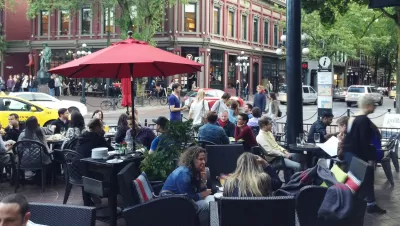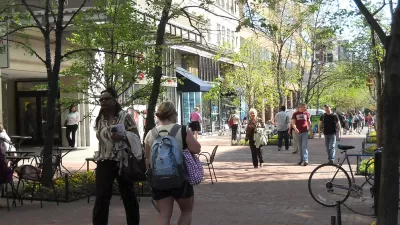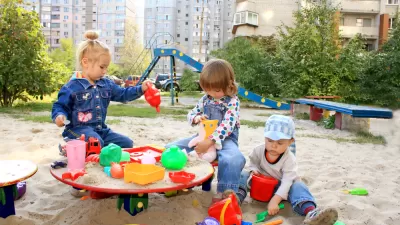As the pandemic emphasized, the way we design our cities can have lasting impacts on residents' health and wellness.

In Governing, Alan Ehrenhalt highlights the link between urban design and public health, pointing to arguments by public health experts that the way we design cities and buildings has a powerful impact on the health of individuals and populations.
A fair amount of public health by design has to do with re-engineering temperature, especially making the environment cooler in abnormally hot times and places. Reducing the amount of blacktop pavement is one way to do this; too much blacktop creates a heat trap. Protecting tree cover is one more; ample tree cover has been shown to reduce the prevalence of asthma in large cities.
As another example, walkability affects people's ability to get regular exercise by walking to work, school, or local amenities. Meanwhile, polluted air can counteract the positive effects of good sidewalks and crosswalks by contributing to the prevalence of lung and respiratory diseases.
Ehrenhalt provides other examples of design choices that impact public health, including stairways, ventilation, and open-air plazas. But while he supports the concept, Ehrenhalt cautions that "Adding health impact studies, in addition to forcing predictions that are difficult to make in the long run, would add significantly to the red-tape problem." Nevertheless, the public health lessons of the past century can inform design decisions that create healthier cities.
FULL STORY: Is the Design of Our Cities Making Us Sick?

Trump Administration Could Effectively End Housing Voucher Program
Federal officials are eyeing major cuts to the Section 8 program that helps millions of low-income households pay rent.

Planetizen Federal Action Tracker
A weekly monitor of how Trump’s orders and actions are impacting planners and planning in America.

Ken Jennings Launches Transit Web Series
The Jeopardy champ wants you to ride public transit.

Crime Continues to Drop on Philly, San Francisco Transit Systems
SEPTA and BART both saw significant declines in violent crime in the first quarter of 2025.

How South LA Green Spaces Power Community Health and Hope
Green spaces like South L.A. Wetlands Park are helping South Los Angeles residents promote healthy lifestyles, build community, and advocate for improvements that reflect local needs in historically underserved neighborhoods.

Sacramento Plans ‘Quick-Build’ Road Safety Projects
The city wants to accelerate small-scale safety improvements that use low-cost equipment to make an impact at dangerous intersections.
Urban Design for Planners 1: Software Tools
This six-course series explores essential urban design concepts using open source software and equips planners with the tools they need to participate fully in the urban design process.
Planning for Universal Design
Learn the tools for implementing Universal Design in planning regulations.
Heyer Gruel & Associates PA
Ada County Highway District
Institute for Housing and Urban Development Studies (IHS)
City of Grandview
Harvard GSD Executive Education
Toledo-Lucas County Plan Commissions
Salt Lake City
NYU Wagner Graduate School of Public Service





























